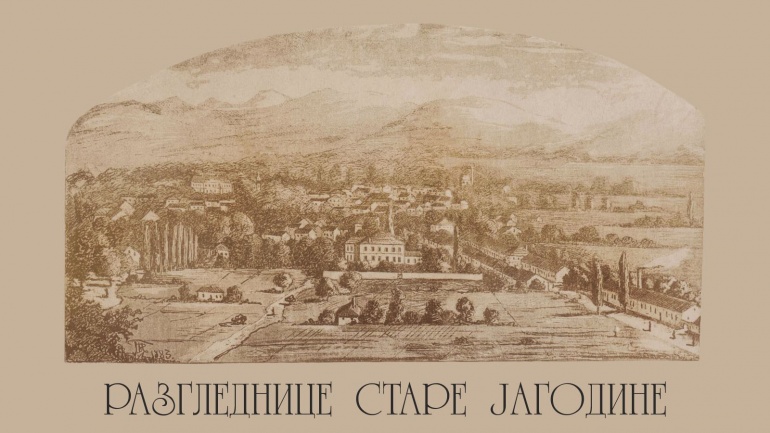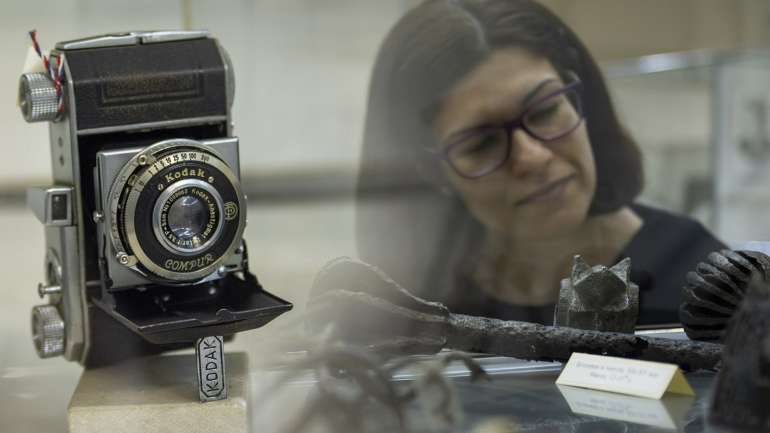By: Branislav Cvetković, museum advisor
In collections of manuscripts and rare books, there are two items that the Museum received as a gift in the 1970s – a postal envelope and an Armenian Bible, once owned by Aram Sukiasian (1897-1960). He was a coffee grinder and merchant who lived in Jagodina since the WW I. Looking for information about this Armenian from Jagodina, we recently found with regret that his grave in Jagodina was vandalized: portraits of Aram and his wife Armena were smashed with a blow. It is easy to see that the “culprit” for this latest disgrace is the word Armenians due to being engraved on the monument. The badly damaged double portrait was therefore transferred to our Museum where it is kept in the Epigraphic Collection. The exodus of refugees from the region of Artsakh (as Armenians call it), or Karabakh (as Azeris call it), which the global TV audience could follow live these days, is the latest reminder of common places in the history of the globe – not only that it is regularly repeated but people are already used to it…
The envelope and the Bible are displayed on the Museum’s permanent exhibition, the purpose of which is to show that our fellow citizens are often ethnically and religiously different, which makes every society richer. Aram’s Bible is a valuable copy with a leather, decorated binding, with gold and blind printings, issued in 1899 by Jacob Poyachyan in Istanbul. The envelope addressed to Aram was sent to him by a bank from Čačak, and his ties with Čačak only recently became clear when Marijana Matović from the Scientific Department of the City Library in Čačak published an exemplary monograph “Armenians in Čačak: 1885-1950”, edition of the National Museum in Čačak. While researching Armenian settlers in archives, she found data on circumstances under which Aram spent some time in Čačak. Having escaped from Ottoman Turkey, in 1913 he came to his relatives Lazarians in Čačak at the beginning of the Austro-Hungarian occupation of Serbia in the WW I, and in order to avoid internment in Turkey, he also took their last name Lazarian. The files say that after the war he begged the authorities to issue him a certificate that his real surname was Sukiasian, providing an explanation and attaching witness statements.
The Jagodina Archives preserve more data from the church’s Marriages Book: Aram was born on April 20, 1897 in Kemah (notorious due to suffering of the Armenian population) in Asia Minor, and his wife Armenula (Armena) on January 15, 1903/ 7 in Smyrna (today Izmir). They were married in the Cathedral Church in Niš, in 1924. Aram’s parents were Zora and Sukias Krikoryan, a merchant from Erzerum, while Armena’s were Takusa and Garabet Zacharyan, a goldsmith from Niš, which means her parents came to Serbia even earlier. There are interesting attachments in Aram’s Bible – leaflet with address: Avenue des Pyramides No 102 Heliopolis (Egypte) and a newspaper fragment with a picture of General Andranik Ozanian (1865-1927). There is also a handwritten note in Armenian on two sheets at the beginning of the Bible. It firstly looked like an autobiographical text, but thanks to colleagues from Matenadaran, the famous library in Yerevan, we now know that the record contains lessons for a happy life and successful business…





